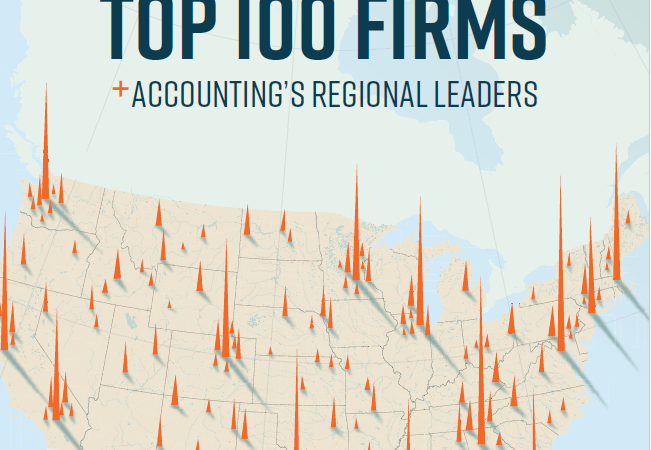The employee retention credit (“ERC”) is designed to encourage employers to keep workers on their payroll and support small businesses and nonprofits during the COVID-19 emergency. Originally enacted as part of the CARES Act, the employee retention credit covered qualified wages paid after March 12, 2020 through December 31, 2020.
The Consolidated Appropriations Act of 2021 extends and expands eligibility for the refundable employee retention tax credit for qualified wages paid between December 31, 2020 and July 1, 2021. The Consolidated Appropriations Act, 2021 does not retroactively expand ERC eligibility or increase the credit amount for wages paid in 2020.
Eligible Employer
New for 2021: For the first and second quarter of 2021, an employer (including a tax-exempt organization) is eligible for the employee retention payroll tax credit if:
- an employer’s operations were fully or partially suspended due to a COVID-19-related shut-down order, OR
- an employer’s gross receipts declined by 20% or more, compared to the same quarter in 2019.
Prior to 2021, an organization was eligible if their gross receipts had declined by 50% or their operations were fully or partially suspended due to a government order.
Gross Receipts: For exempt organizations, the Consolidated Appropriations Act clarified that “gross receipts” are defined under Section 6033, which includes investment income. Specifically, gross receipts is the gross amount received by the organization from all sources without reduction for any costs or expenses. Gross receipts are not limited to dues or other exempt-function income.
Fully or Partially Suspended Operations: An employer may have fully or partially suspended operations when a government order related to COVID-19 limits commerce, travel, or group meetings in a manner that prevents an employer from operating at normal capacity. An employer subject to a government order, who can maintain “comparable” operations through telework or other means, will not be eligible for the ERC.
Employers that operate in multiple jurisdictions and are subject to governmental orders limiting operations in some, but not all jurisdictions, are considered to have a partial suspension of operations in all locations if the employer has established a policy to operate in a consistent manner in all jurisdictions and that policy complies with a local government order, as well as CDC recommendations. CDC recommendations alone are not considered governmental orders.
The IRS has clarified that an employer who received a Small Business Interruption Loan under the Paycheck Protection Program (“PPP”) is still eligible for the employee retention credit. However, only qualified wages that are not counted as payroll costs in obtaining PPP loan forgiveness will count toward eligibility for ERC.
Qualified Wages
New for 2021: The definition of “small” and “large” employers has been modified. For wages paid January 1, 2021, through June 30, 2021, a small employer is considered one that had, on average, 500 or fewer full-time employees in 2019. Prior to 2021, the definition of a small employer only included those with 100 or fewer full-time employees.
For an organization qualifying as an eligible employer during the first and/or second quarter of 2021, and who had 500 or fewer employees on average in 2019; the ERC is based on all wages paid to employees during the period of suspended activities or significant decline in gross receipts, regardless of whether the employees performed services or worked during the time for which they were paid.
For an organization qualifying as an eligible employer during the first and/or second quarter of 2021, and who had more than 500 employees on average in 2019; the ERC is allowed only for wages paid to an employee for time the employee is not providing services. A loss of productivity does not amount to not providing services.
Qualified wages include an eligible employer’s qualified health plan expenses that are properly allocable to those wages. Additionally, any wages paid to employees under a pre-existing vacation, sick and other leave policy during the period of the full or partial suspension of operations, or a significant decline in gross receipts, are considered qualified wages for purposes of the employee retention credit. Required sick leave wages or family leave wages paid under the Families First Coronavirus Response Act are excluded because those wages are taken into account in calculating a separate payroll tax credit.
Amount of Tax Credit
New for 2021: The maximum credit has increased to $7,000 per employee, per quarter in 2021. However, the ERC is only available for wages paid in the first and second quarter of 2021, so the maximum aggregate credit could total $14,000 per employee in 2021. The maximum credit allowed for the entire 2020 year was only $5,000 per employee.
For the period January 1, 2021 through June 30, 2021, the employee retention credit equals 70% of up to $10,000 in qualified wages paid, per employee and per quarter. Credits claimed based on fully or partially suspended operations may only be claimed for qualified wages paid during the time the governmental order was in effect.
Example: An eligible employer (with partially suspended operations) pays an employee $15,000 in qualified wages during the first quarter of 2021. The eligible employer may claim a credit equal to 70% of up to $10,000 in qualified wages during the first quarter. Therefore, the maximum ERC of $7,000 will be claimed in the first quarter of 2021. For the second quarter of 2021, let’s assume COVID-19 restrictions are lifted and only $5,000 of wages qualified during the second quarter. The ERC claimed in the second quarter will equal 70% of $5,000, or $3,500. Note: If the employer in this example also had a 20% decline in gross receipts during the second quarter of 2021, additional wages may qualify for the ERC, but only up to the maximum allowable credit.
Paid Sick and Family Medical Leave
The payroll tax credit for paid sick or family medical leave now covers qualified sick leave and family leave wages paid after December 31, 2020 through March 31, 2021.
The Families First Coronavirus Response Act (FFCRA) generally requires employers with less than 500 employees to provide paid sick and paid family medical leave to employees; but a corresponding payroll tax credit effectively offsets the added economic burden placed on these employers. The Consolidated Appropriations Act of 2021 does not retroactively change or expand paid sick leave or family medical leave provided under the FFCRA. However, it does extend eligibility to March 31, 2021.
Claiming the Employee Retention Credit
An eligible employer will claim its total qualified wages and its employee retention credit on its quarterly employment tax return, most commonly Form 941.
Employers can be immediately reimbursed for the credit by reducing required deposits by the amount of the anticipated credit. Employers are permitted to withhold deposits of both the employer’s portion of payroll taxes and the employee’s payroll taxes that have been withheld. If payroll tax deposits kept by an employer are not sufficient to cover the credit, the employer will receive a refund of the excess credit upon filing of their quarterly employment tax return. Employers who have immediate cash flow needs may receive an advance payment from the IRS by submitting Form 7200, Advance Payment of Employer Credits Due to COVID-19.
Conclusion
Employers affected by COVID-19 should carefully consider their eligibility for the Employee Retention Credit. Each employer is unique in their operations, so eligibility must be determined based on an employer’s individual circumstances.
Employers claiming the Employee Retention Credit must keep records supporting: 1) eligible employer status, and 2) the amount of qualified wages reported on Form 941. Employment tax records should be retained for at least four years. For employers with more than 500 employees, additional documentation must be retained in order to substantiate the time for which employees are paid for not providing services.
DISCLAIMER: The IRS is expected to provide further guidance and instructions regarding employee retention payroll tax credit eligibility for 2021. As such, information presented is subject to change.
If you need further information, please contact us.
Prepared By:
Justin W. Herring, CPA, MST | Tax Manager




